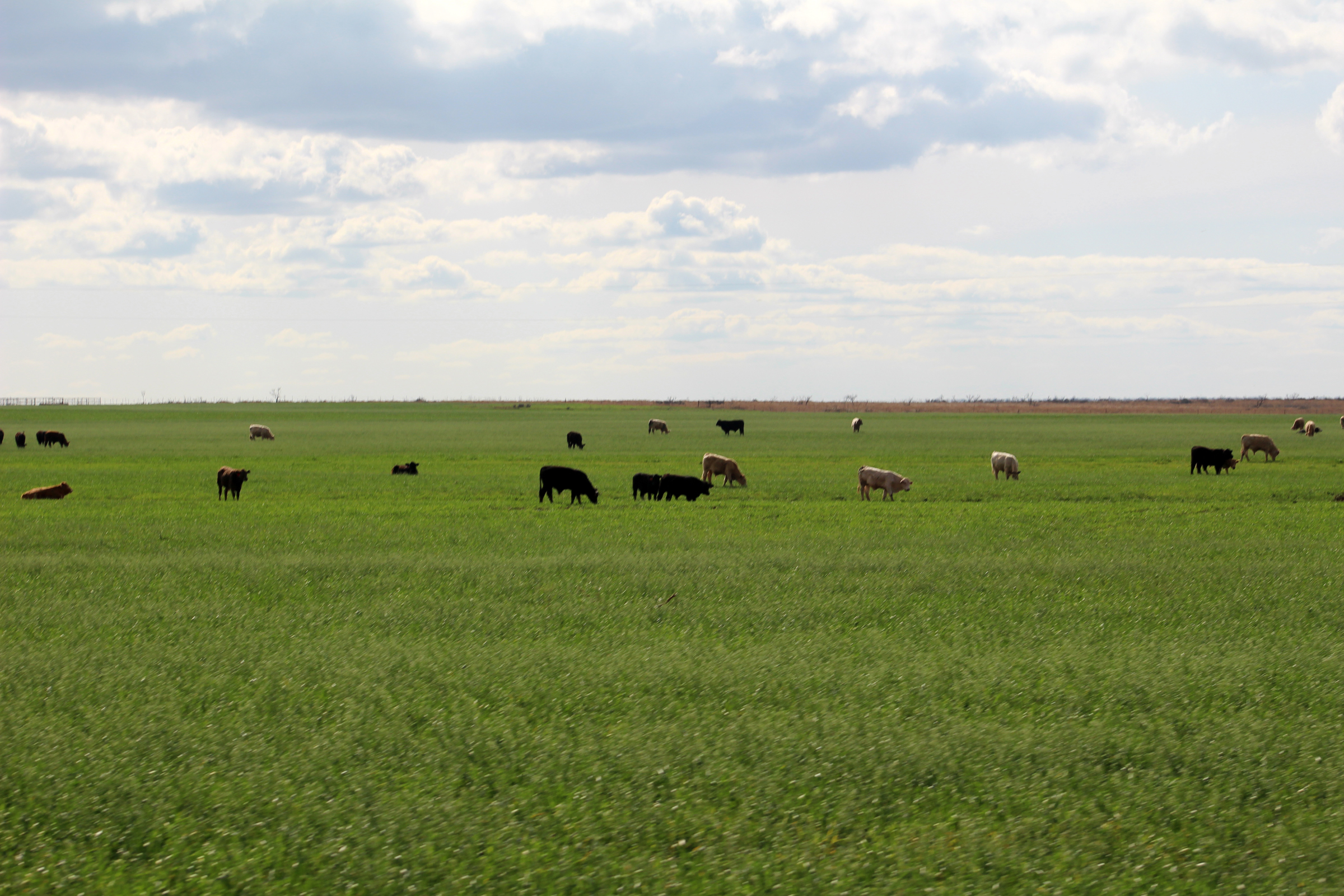Farm & Ranch
Meanwhile, back at the ranch…

By Rayford Pullen
With fall officially underway, our winter plans begin to occupy our minds, specifically as it pertains to hay needs and inventory, potential protein supplements and winter pastures.
In our neck of the woods, North Central Texas, grass growth usually ends when night time temperatures begin hitting the 45 degree mark, and if you have a vegetable garden, you’ll notice your summer- time vegetables take a dive about this same time.
While growth may cease, the quality of your forage is very good since forage quality is influenced negatively by high summer temperatures and as a result our cattle performance goes down but returns when our temperatures go down. Since the rains have come and the grass has grown, our pastures have made a really nice recovery after several years of drought.
Hay made in the fall should be a lot better than hay cut in the middle of summer when all things are considered. Fertilizer will add about three percent more protein to hay if it is cut after about a month of growth. The cooler temps this fall may offset this advantage in protein since most of us don’t do much fertilizing after June on our warm season pastures.
So, while quantity may be down, quality, including digestibility, should be up significantly. If hay stocks for your operation are still low, now would be a good time to bale with the only negative being the plants’ ability to translocate nutrients from the stems and leaves to the root system, which ensures better winter hardiness and a stronger start next spring.
In our area, winter pastures in plowed ground have been planted and those over seeded in warm season pastures are being planted now.
To read more pick up a copy of the October 2016 NTFR issue.
Farm & Ranch
Hazards of Backyard Poultry

By Barry Whitworth, DVM
Having backyard poultry is a popular agriculture enterprise. According to the United States Department of Agriculture, 0.8 percent of all households in the United States have chickens. People keep chickens for a variety of reasons with table eggs being one of the more common reasons.
Unfortunately, some of these poultry producers are not aware of the hazards that come with keeping poultry because many times they carry pathogens but appear healthy.
Chickens are carriers of several zoonotic diseases. These are diseases that can be passed from animals to humans. According to a recent survey in Pennsylvania, a majority of backyard poultry producers were aware of the dangers of avian influenza. However, this study also revealed that far fewer producers were aware of the risk of possible exposure to Salmonella and Campylobacter.
The lack of knowledge about the hazards of raising poultry likely contributes to the continued issues of Salmonella outbreaks associated with backyard poultry. In 2023, the Centers for Disease Control and Prevention reported 1,072 illnesses of Salmonella linked to backyard poultry, and 272 of those patients required hospitalization. Oklahoma reported 43 individuals with the disease.
To read more, pick up a copy of the April issue of NTFR magazine. To subscribe by mail, call 940-872-5922.
Farm & Ranch
Ag Elsewhere: Wyoming

By Tressa Lawrence
Babies are tucked away in every nook and cranny. Many ranchers across Wyoming have baby animals popping up all over this time of year.
Farm & Ranch
Ag Elsewhere: Montana

By Lindsey Monk
Another load of grain in to keep feeding the calves until the green grass can really start popping.
-

 Country Lifestyles1 year ago
Country Lifestyles1 year agoScott & Stacey Schumacher: A Growth Mindset
-

 Equine7 months ago
Equine7 months agoThe Will to Win
-

 Country Lifestyles7 years ago
Country Lifestyles7 years agoStyle Your Profile – What your style cowboy hat says about you and new trends in 2017
-

 Country Lifestyles4 years ago
Country Lifestyles4 years agoAmber Crawford, Breakaway Roper
-

 HOME7 years ago
HOME7 years agoGrazing North Texas – Wilman Lovegrass
-

 Country Lifestyles7 years ago
Country Lifestyles7 years agoDecember 2016 Profile, Rusty Riddle – The Riddle Way
-

 Country Lifestyles8 years ago
Country Lifestyles8 years agoJune 2016 Profile – The man behind the mic: Bob Tallman
-

 Outdoor9 years ago
Outdoor9 years agoButtercup or Primrose?






